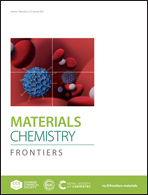A natural polymer with desirable self-healing and recyclable, antibacterial, and adhesive properties based on turpentine monomer†
Abstract
The flourishing of dynamic covalent chemistry inspired research on the dynamic covalent disulfide bond-containing materials, where the natural small molecule thioctic acid (TA) came into sight. However, the wide application of TA-containing materials is hindered by the instability of the polyTA. Thus, in order to overcome this shortcoming and align with green chemistry, the natural turpentine monomer β-pinene and limonene were used to stabilize the polyTA by reverse vulcanization, where a transparent self-healing and antibacterial turpentine oil-modified polyTA (TA-β and TA-LIM) was prepared. The positive effect of the β-pinene and limonene on stabilizing the TA-containing material was indexed with favorable thermal stability and mechanical property, where the tensile strength and elongation at break of TA-LIM reaches 90kPa and 550%. The existence of the dynamic sulfide rendered favorable self-repairing capacity in the TA-β and TA-LIM, where self-healing efficiency could be achieved at 75% and 80% under room temperature, respectively. Moreover, both turpentine oil-modified polyTAs displayed over 90% killing efficiency towards Escherichia coli and Staphylococcus aureus. The long-term antibacterial capacity of TA-β and TA-LIM was confirmed by an inhibition zone of over 20 mm diameter after one week.



 Please wait while we load your content...
Please wait while we load your content...